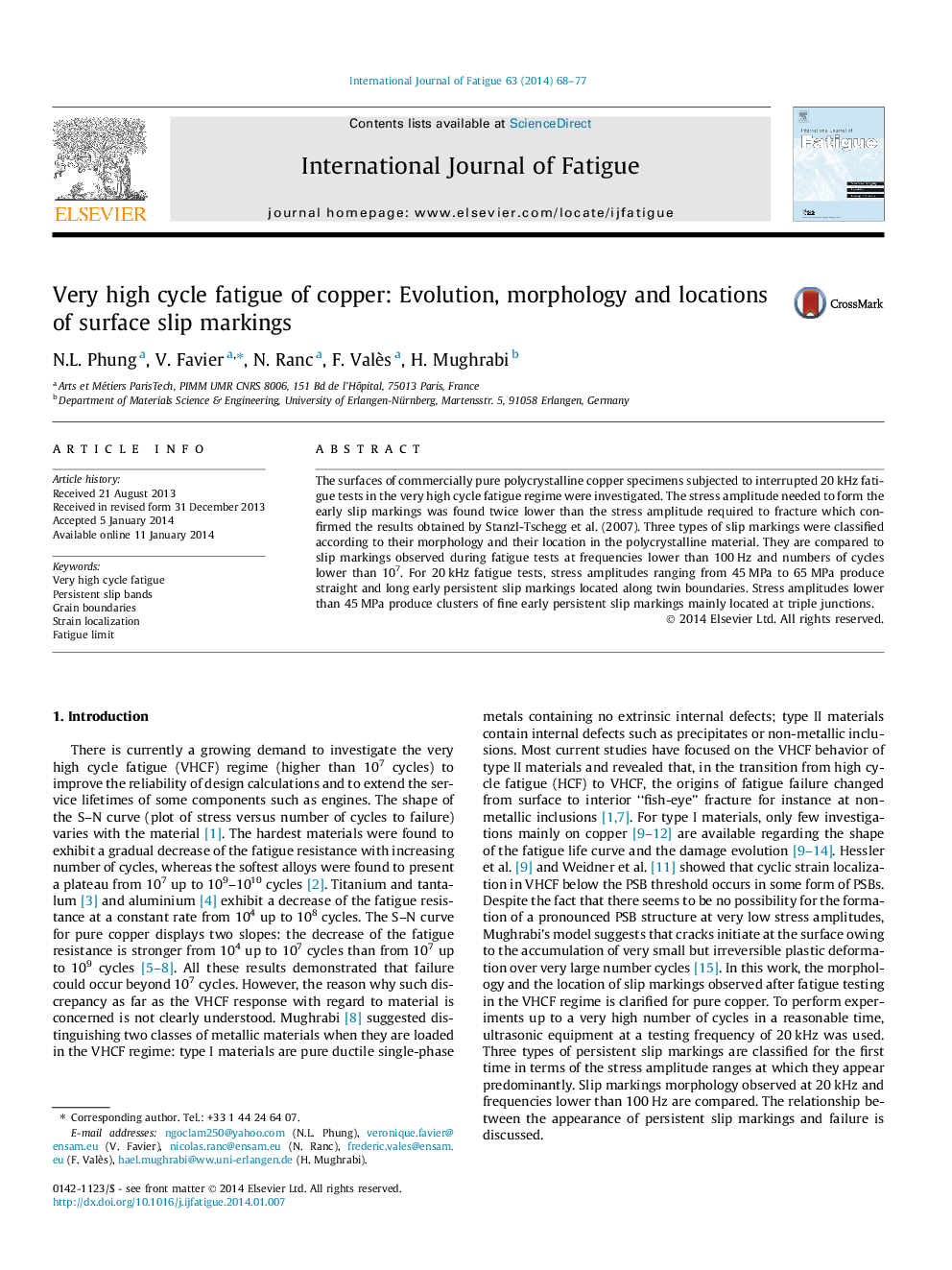| Article ID | Journal | Published Year | Pages | File Type |
|---|---|---|---|---|
| 775296 | International Journal of Fatigue | 2014 | 10 Pages |
•The slip markings formed in copper at 20 kHz were classified for the first time.•At high stress amplitudes, common persistent slip bands are formed.•At medium stress amplitudes, early slip markings are located at twin boundaries.•At low stress amplitudes, early slip markings located at triple junctions develop.•Strain localization changes the latter into the two other types of slip markings.
The surfaces of commercially pure polycrystalline copper specimens subjected to interrupted 20 kHz fatigue tests in the very high cycle fatigue regime were investigated. The stress amplitude needed to form the early slip markings was found twice lower than the stress amplitude required to fracture which confirmed the results obtained by Stanzl-Tschegg et al. (2007). Three types of slip markings were classified according to their morphology and their location in the polycrystalline material. They are compared to slip markings observed during fatigue tests at frequencies lower than 100 Hz and numbers of cycles lower than 107. For 20 kHz fatigue tests, stress amplitudes ranging from 45 MPa to 65 MPa produce straight and long early persistent slip markings located along twin boundaries. Stress amplitudes lower than 45 MPa produce clusters of fine early persistent slip markings mainly located at triple junctions.
